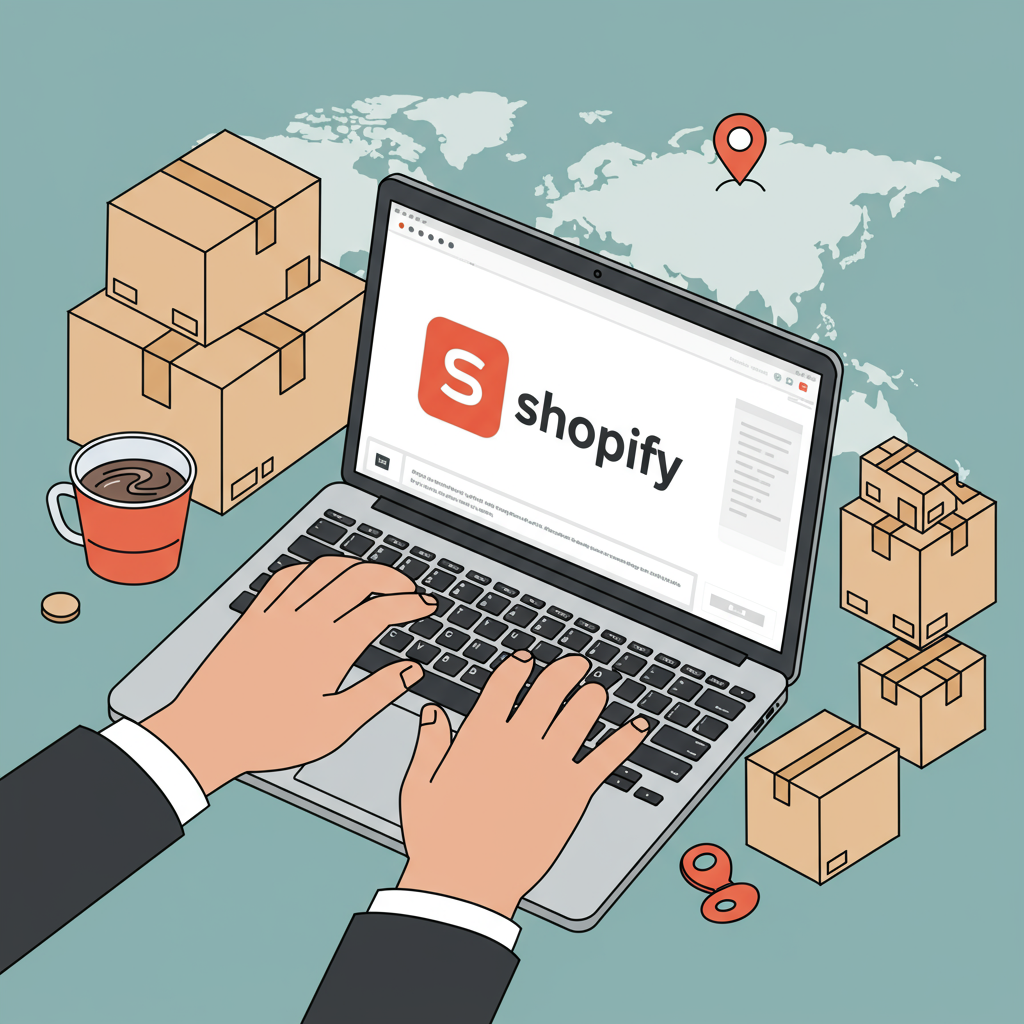A Comprehensive Guide to Building and Scaling Your Online Store
Hello fellow entrepreneurs! I’m here to share my journey and insights into one of the most exciting e-commerce models: dropshipping. If you’ve ever dreamed of running an online business without the hassle of inventory, this guide is for you.
Dropshipping, in its essence, is a retail fulfillment method where you don’t keep the products you sell in stock. Instead, when a customer places an order, you purchase the item from a third-party supplier who then ships it directly to the customer.
This model offers incredible advantages: low startup costs, no inventory management, flexibility to work from anywhere, and a vast product selection. It’s a fantastic entry point into the world of e-commerce.
Now, why Shopify? From my experience, Shopify is hands down the best platform for dropshipping. Its user-friendly interface, robust app store, excellent customer support, and scalability make it the ideal choice for beginners and seasoned merchants alike.
Let’s dive into the first crucial step: Niche Selection. This isn’t just about picking something you like; it’s about finding a sweet spot where passion meets profitability.
I always recommend starting with a niche you’re genuinely interested in. This makes the research and marketing process much more enjoyable and sustainable. However, don’t let passion blind you to market demand.
Research potential niches using tools like Google Trends, Amazon Best Sellers, and social media trends. Look for evergreen niches, trending products, or underserved markets. Avoid overly saturated niches unless you have a unique angle.
Once you have a niche, the next step is Product Research. This is where you identify the specific items you’ll sell. I look for products that solve a problem, evoke emotion, have a “wow” factor, or are difficult to find locally.
Consider products with good profit margins (ideally 20-40% or more), low shipping costs, and a relatively low return rate. Test different products within your niche to see what resonates with your audience.
Finding Reliable Suppliers is paramount. This is the backbone of your dropshipping business. Platforms like AliExpress are popular for their vast selection and low prices, but quality control and shipping times can be a concern.
I’ve also had great success with dedicated dropshipping apps like Oberlo (now integrated with DSers), Spocket, and Doba. These platforms often pre-vet suppliers and offer faster shipping options, albeit sometimes at a slightly higher product cost.
Always communicate clearly with your suppliers. Ask about their shipping times, return policies, and product quality. Building a good relationship with a few trusted suppliers will save you a lot of headaches down the line.
With your niche and products in mind, it’s time for Step 4: Setting Up Your Shopify Store. This is where your brand comes to life.
First, sign up for a Shopify account and choose a suitable plan. Then, select a theme that aligns with your brand aesthetic. Shopify offers many free and paid themes, all customizable.
Focus on creating a professional and trustworthy appearance. Your store’s design, logo, and overall branding should reflect quality and reliability. Don’t forget essential pages like “About Us,” “Contact Us,” “Privacy Policy,” and “Refund Policy.”
Step 5 is Product Import & Optimization. Once your store is set up, it’s time to add your chosen products. If you’re using an app like DSers, this process is largely automated.
However, don’t just import and forget. Optimize every product listing. Write compelling, benefit-driven product descriptions that highlight features and solve customer problems. Use high-quality, clear images and consider adding product videos.
Your pricing strategy is also critical. Calculate your costs (product, shipping, transaction fees, marketing) and set prices that ensure a healthy profit margin while remaining competitive.
Now for the exciting part: Marketing Your Store (Step 6). A beautiful store with great products is useless if no one knows about it.
I recommend a multi-pronged approach. Start with Search Engine Optimization (SEO) to help your store rank organically on Google. Use relevant keywords in your product titles, descriptions, and blog posts.
Social media marketing is a must. Identify where your target audience hangs out (Instagram, TikTok, Facebook, Pinterest) and create engaging content. Run contests, share user-generated content, and interact with your followers.
Paid advertising, particularly Facebook/Instagram Ads and Google Ads, can provide immediate traffic and sales. Start with a small budget, test different ad creatives and audiences, and scale what works.
Don’t underestimate the power of email marketing. Build an email list from day one and use it to send welcome sequences, abandoned cart reminders, promotional offers, and new product announcements.
Step 7: Order Fulfillment & Customer Service. This is where you build trust and repeat customers. When an order comes in, promptly place it with your supplier. Use tracking numbers and keep your customers informed.
Excellent customer service is non-negotiable. Respond to inquiries quickly and professionally. Be transparent about shipping times and handle returns or issues gracefully. A happy customer is your best marketing tool.
Finally, Step 8: Scaling Your Business. Once you have consistent sales, analyze your data. What products are performing best? Which marketing channels are most effective?
Look for opportunities to expand your product catalog, explore new marketing avenues, or automate more of your processes. Consider hiring virtual assistants for customer service or order fulfillment as you grow.
What do you think about this article? I’d love to hear your thoughts and if you found these steps helpful for your dropshipping journey.
Remember, dropshipping isn’t a get-rich-quick scheme. It requires dedication, continuous learning, and persistence. There will be challenges, but with the right mindset and the strategies I’ve outlined, you can build a thriving online business.
I truly believe that with Shopify and a solid plan, anyone can achieve success in dropshipping. Take action, learn from your experiences, and enjoy the freedom and potential that this business model offers. Good luck on your entrepreneurial adventure!






